 |
|
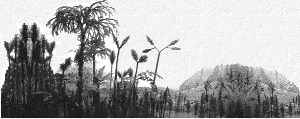 |
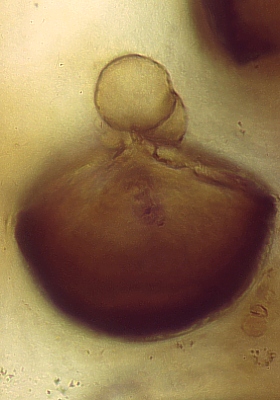
A spore of Aglaophyton infected by fungi |
Apart from vascular plants, many other organisms have been documented from the Rhynie Chert. Kidston & Lang already described several fungi. In addition to the endomycorrhizae that have been described before, in recent years several other new fungi have been reported. Among the mycelium-forming fungi, the Phycomycetes having hyphae without septae are most common. However, the most common types of fungi are the very small aquatic or soil-inhabiting Chytrids, a group that includes saprobionts as well as parasites. Saprobionts live on dead organic material whereas parasites live on living organisms. This latter category includes forms that only grow on spores and forms living on other fungi (mycoparasitism). | |
| Very interesting was the discovery of the earliest representatives of the ascomycetes a group of fungi that is very widespread today. The Rhynie Chert ascomycetes have a very modern appearance and are approximately 100 million years older than was expected on the basis of molecular studies of modern representatives. For information can be found on our special Oldest Ascomycetes page. | 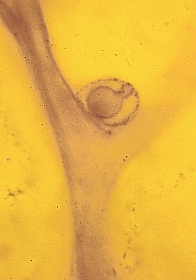 |
|
| Right: Mycoparasitism, a fungal parasite
on another fungus
living in Horneophyton |
||
| Another remarkable form is
Winfrenatia,
the oldest lichen, being a symbiosis between a fungus and a
cyanobacteria.
For more details see our special Oldest
Lichen page.
Among the algae Palaeonitella is the most spectacular form. These are the oldest fully threedimensionally preserved charophytes. This fresh-water alga is preserved in situ and they indicate the presence of temporary ponds. Like vascular plants, alga are sometimes infected by fungi. The infected cells show - just like in modern charophytes - a particular host reaction: the infected cell is strongly swollen. The systematical position of some other Rhynie Chert taxa is still unclear; some forms have been interpreted as bacteria. |

Winfrenatia: Fungal hyphae (mycobiont) forming a net enclosing cyanobacteria (photobiont) |
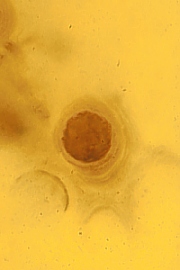 |
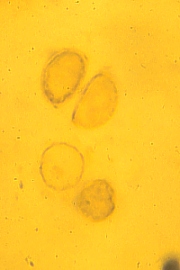 |
 |
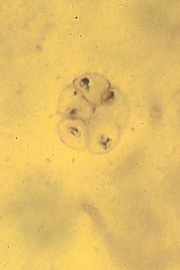 |
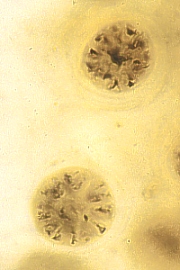 |
| © Forschungsstelle für Paläobotanik, Westfälische Wilhelms-Universität Münster |
April 2000
|